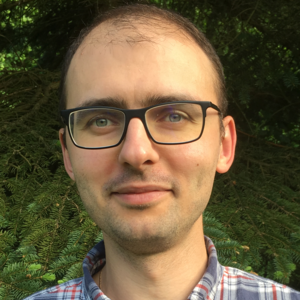Study
The course involves the study of the current state of rapidly developing areas of physics and
technology related to the magnetism of nano and microsystems. On the one hand, modern
methods for studying nanostructures will be discussed, including synchrotron and X-ray
spectroscopy, neutron scattering, tunneling microscopy, etc., and on the other hand, it is
planned to study theoretical approaches used to describe physical properties, the ordering and
dynamics of magnetic nanosystems as well as for the interpretation of experimental data. It is
also planned to implement individual projects related to the modeling of magnetic micro and
nanosystems.
1. Magnetism at different spatial scales. Exploring of spin degrees of freedom. New magnetic states and structures :
magnetics superlattices, exchange magnetic springs, skyrmions etc.
2. Hierarchy of physical models. Dimensionless parameters. Ideal gas – gas of solid balls – classical plasma – quantum plasma.
3. The nature of magnetism. Dia, para and ferromagnetism. Localized and itinerant models of magnetism.
4. Antiferromagnetic exchange coupling in magnetic superlattices. Giant magnetoresistance.
5. Ising model. Absence of phase transition in 1-dimensional Ising model. Goldstone modes.
6. Generalized Heisenberg model. Exchange, anisotropy, Dzyaloshinskii-Moriya interaction.
7. Mean field approximation. Landau theory of phase transitions.
8. Models of itinerant magnetism. Habbard, Anderson, Alexander-Anderson Models.
9. Green function for Anderson model. Density of states and magnetic moment calculations.
10. Non-collinear magnetism within the framework of itinerant models. Non-collinear magnetic structures.
11. Topological magnetic structures. Racetrack memory.
12. Stability of magnetic states. Transition state theory
13. Dynamics of magnetic states. Landau–Lifshitz–Gilbert equation.
14. Perspectives of spintronics
Основная:
1. С.В. Вонсовский, Магнетизм
2. А.Г. Гуревич, Г.А. Мелков, Магнитные колебания и волны
Дополнительная:
1. Р. Уайт, Квантовая теория магнетизма
2. J. M. D. Coey, Magnetism and Magnetic Materials
3. Skyrmions. Topological Structures, Properties, and Applications, Edited by J Ping Liu
Zhidong Zhang Guoping Zhao
4. Handbook of Magnetism and advanced magnetic materials, Ed. H. Kronmüller, S. Parkin
Наряду изучением материала на лекциях предполагается выполнение индивидуальных
проектов, включающих компьютерное моделирование, аналитические и численные
расчеты, а также доклады-презентации с представлением результатов. На финальную
оценку влияют как результат экзамена, так и результаты работы по проектам.


